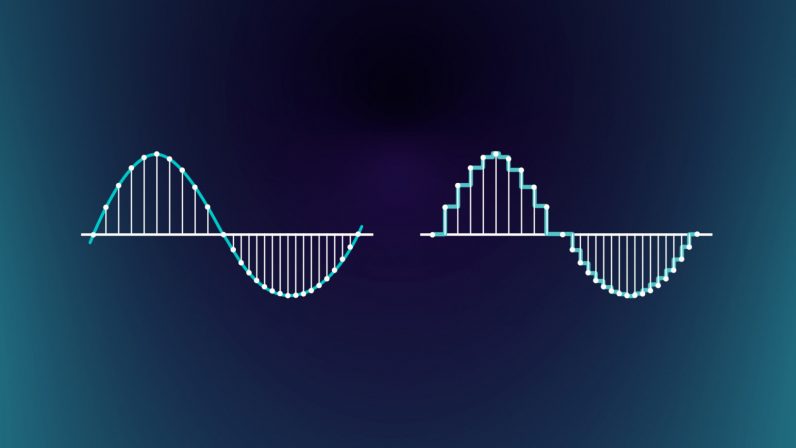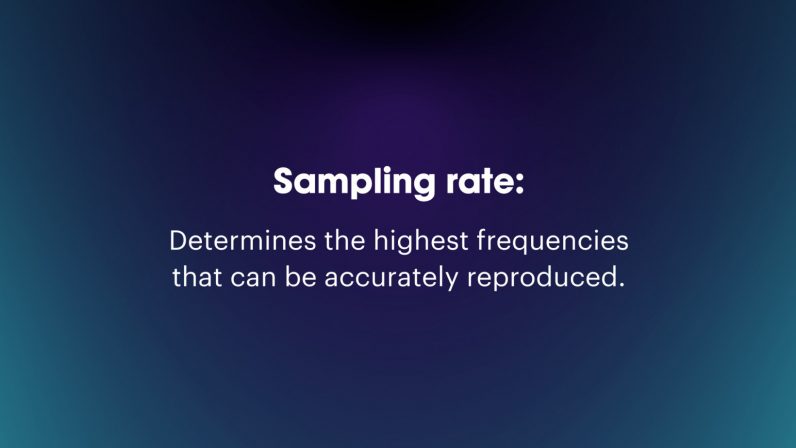#What’s sampling rate? And why does it matter for music?

Table of Contents
“#What’s sampling rate? And why does it matter for music?”
On a fundamental level, sampling rate is a result of the digitization of audio. While analog sound waves are continuous, digital music is made up from lots of small data points played one after another.
But we’re getting ahead of ourselves.
Sampling rate in audio is literally the number of “samples” taken per second. This is measured in Hertz (Hz).
[Read: How do you build a pet-friendly gadget? We asked experts and animal owners]
Now, the common rate is that of CDs or FLAC, which is a lossless audio file. This clocks in at 44.1kHz. What this means in practice is for every second of music, 44,100 samples are taken from a continuous analog signal in order to create a digital file.
The higher this number is, the higher the quality of audio — up to a point, but we’ll get to that soon. This graph is a good visualization tool for how that works:

All that should have illuminated you on what sampling rate in audio is, but now we have another question…
What impact does sampling rate have on music?
We’ve already touched on the accuracy issue (i.e. the higher the sampling rate, the higher the quality), but it’s not quite that simple. Sampling rate is directly related to frequency, in other words the highest sound that can be accurately reproduced.
Let’s look at the common 44.1kHz figure we discussed earlier.
This allows sounds of up to 22kHz to be played back. The reason it’s this frequency and not 44.1kHz is all down to the Nyquist–Shannon Theorem. Those brainboxes had this to say about it:
“If a system uniformly samples an analog signal at a rate that exceeds the signal’s highest frequency by at least a factor of two, the original analog signal can be perfectly recovered from the discrete values produced by sampling.”
If you want to know more, you can go and read about it here. The easiest way to remember it is the sampling rate of audio needs to be double that of the highest frequency that needs to be reproduced.
Here’s a picture, because why not?

Do you remember earlier when I said sampling rate impacts quality, but only up to a point? Now’s the time to resolve that.
The limits of human hearing stretch from 20Hz to 20kHz. The truth is though that the majority of people cannot hear anywhere near these high. The average upper limit for adults is between between 15kHz and 17kHz.
What this means is that CDs and many FLAC files play music with frequencies beyond what humans can hear.
Of course, this is a contentious topic. If you browse forums, you’ll find plenty of people arguing the case for 48kHz (which I think makes sense), 96kHz, and even 192kHz sampling rates.
I’m not going to get into this too much (a lot of my view with music is that if it makes you happy, then it’s fine — who am I to judge?), but the science supporting the importance of high sampling rates to listeners is shaky at best, and non-existent at worst.
I will say this though: I’m talking about this from the perspective of a music consumer. For recording, high sampling rates can be a useful tool, mainly due to a whole load of technical details that you can read more about here .
TL;DR
Sampling rate can be seen as the audio version of frames per second. It is the number of “clips” taken from an analogue sound wave in order to make it a digital file.
On top of this, sampling rate also controls the highest frequency that can be accurately reproduced by a digital file.
There we go, people! Some analysis on what sampling rate is, just for you.
Did you know we have a newsletter all about consumer tech? It’s called Plugged In –
and you can subscribe to it right here.
Published March 3, 2021 — 10:40 UTC
If you liked the article, do not forget to share it with your friends. Follow us on Google News too, click on the star and choose us from your favorites.
For forums sites go to Forum.BuradaBiliyorum.Com
If you want to read more like this article, you can visit our Technology category.




